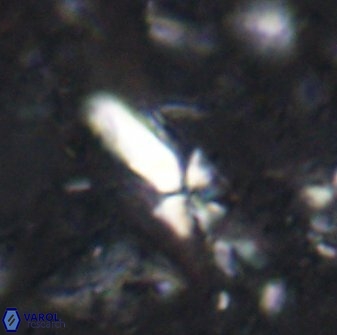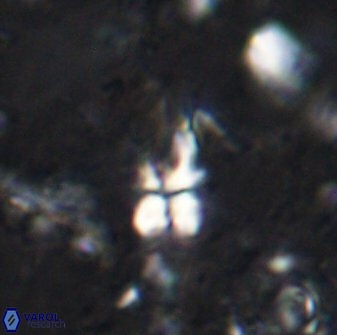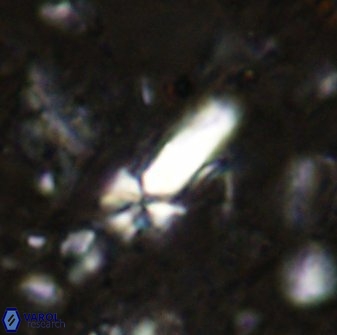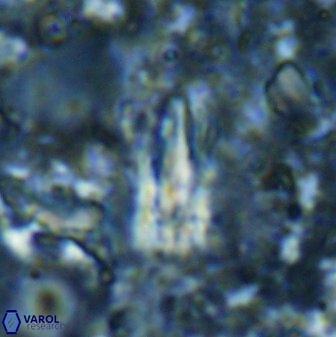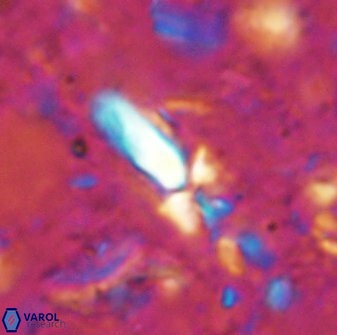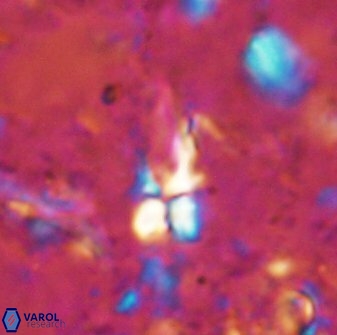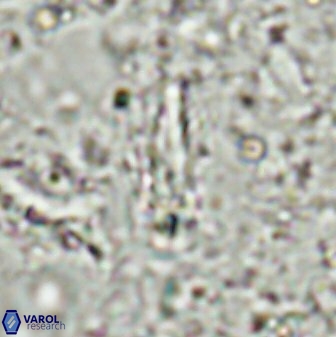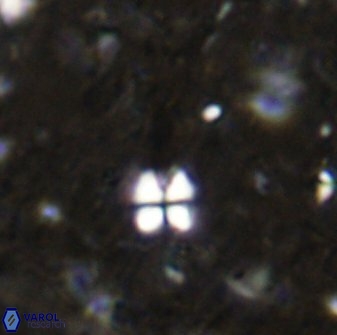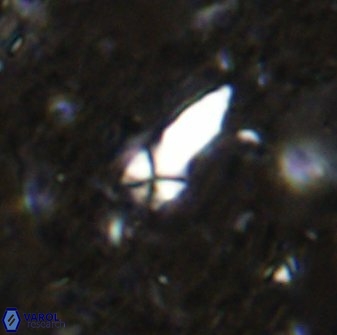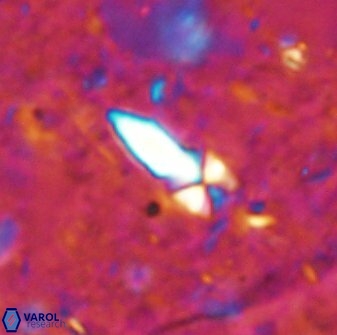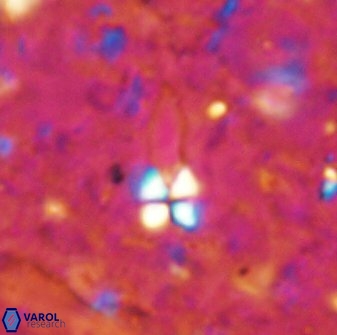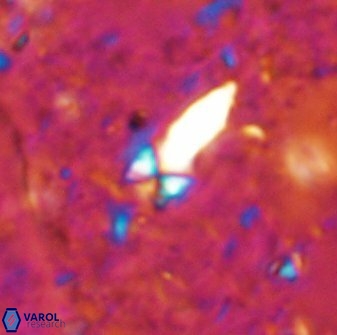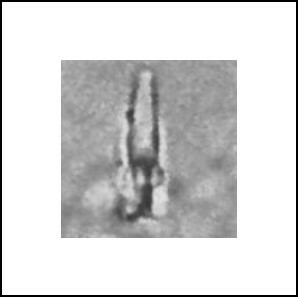Sphenolithus conspicuus
Medium to large size (5.0-10.0µm) species of Sphenolithus have an apical spine without an axial median line. The apical spine is extinct at 0° and displays maximum birefringence at 45 ° It is almost parallel-sided for the first half of its length before strongly tapering to the point.
The lateral cycles are aligned longitudinally at 0°. A deep calyx is formed by the lateral segments for the insertion of the apical spine.
The cylindrical proximal cycle with flaring proximal end has irregular quadrilateral shape segments in the axial section. The inner ends of segments joined about half of their length along the longitudinal axis but not joined nearer the proximal end thus creating a conical proximal cavity.
Martini, 1976 indicated a 5.0-10.0µm size range for this species [calculated size of the holotype is 9.0µm].
Sphenolithus conspicuus differs from Sphenolithus villae Bown, 2005d by being smaller [<10.0µm] and having a cylindrical proximal cycle, whereas the latter has a frustum shape proximal cycle.
It is easily distinguished from Sphenolithus anarrhopus Bukry & Bramlette, 1969b by having a symmetrical apical spine and a lateral cycle aligned longitudinally at 0°.
Bown, P. R. 2005d. Palaeogene calcareous nannofossils from the Kilwa and Lindi areas of coastal Tanzania (Tanzania Drilling Project 2003-4). Journal of Nannoplankton Research 27(1): 21-95.
Bukry, D., Bramlette, M. N., 1969b. Some new and stratigraphically useful calcareous nannofossils of the Cenozoic. Tulane Studies in Geology 7, 131-142.
Martini, E., 1976. Cretaceous to Recent calcareous nannoplankton from the Central Pacific Ocean (DSDP Leg 33). Initial Reports of the Deep Sea Drilling Project 33, 383-423.
